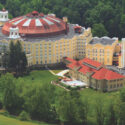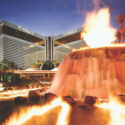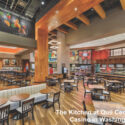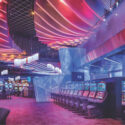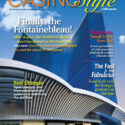
There’s a radical philosophy out there that says money isn’t really worth anything—that its value is simply what we all agree it is because the government tells us what it’s worth, and the only reason it works is because we all buy into it. There’s a certain logic to that, since money is no longer backed by gold or silver. But it’s difficult to grasp how it really works, so we all go along assuming that money is valuable and measurable.
But maybe not. When you look at the trillions of dollars in real estate value that simply disappeared during the recent recession, the theory tends to hold some water, at least. Remember, all money is fungible.
The “value” of a casino or a casino expansion got me to thinking about the relative return on investment when you build or expand a casino in this day and age. And the juxtaposition of a huge new casino like the Cosmopolitan of Las Vegas and the relatively modest expansion of a tribal casino, Casino del Sol, in Tucson, Arizona, seemed to me to illustrate what is happening these days in casino design and construction.
As we publish this, our ninth edition of Casino Design magazine, we’ve endured a couple of tough years, and no segment has been hit harder than the architects, designers, engineers, consultants and builders that work in this field. When the economy goes south, the first thing that gets cut are plans for new casinos, expansion and renovations. Certainly not the wisest choice, but maybe the easiest.
So it seemed to me that these two properties that made it through the difficult times are true representatives of the state of today’s industry.
The Cosmopolitan rode a roller coaster to the finish. The departure of the original owners and many of the designers gave way to new owners (the investment bank that backed the original owners) and an exciting team of designers, architects and builders that produced a stunning building. With an eye on the finish line and on the pocketbook, the completed version of the Cosmopolitan is an ode to the casino of the future.
In Tucson, the Pascua Yaqui tribe used its traditional deliberative methods to consider how and when to build an expansion on its existing Casino del Sol property. As a small tribe, with a growing gaming operation, tribal leaders brought in the best leadership, consultants, designers and builders to aid in the process. The result is a stunning 10-story, 200-room, four-star hotel scheduled to open on 11/11/11.
While making no judgments on either approach to development, the two projects make a statement on the casino design industry: where we’ve been, where we are today, and where we are going. If these are examples of the future, we will be well served.
The other stories in this year’s Casino Design magazine also look to the future. In “Real Renovation” on page 50, Jane Lee and Klaus Steinke show what you can do with a paltry $50 million. In the same theme, on page 46, Marjorie Preston describes how judicious renovations can help properties avoid the fate of the Sahara.
Julie Brinkeroff-Jacobs reprises her annual designers’ roundtable with a discussion of what is “Ordinary Or Extraordinary.” Her stellar lineup of panelists offers insights into the pressing issues of the day.
Frank Legato’s piece on the development of Atlantic City shows how the city’s “unique experiment in urban revitalization” now is taking a second, even more necessary step as the encroachment of competition in surrounding states forces the Boardwalk town to again reinvent itself.
Bob Kelly gives us a peek inside the casino hotel room and explains why just a bed and a bathroom are no longer enough.
And while it may not be a physical building, the “architecture” necessary to build—and effectively utilize—a growing database is just as important as all the bricks and mortar. Joe Witterschein explains starting on page 54 why the data warehouse is just the jumping-off point in knowing the likes and dislikes of your customers.
As we approach the 10th edition of Casino Design, I would be remiss if I didn’t take time to thank all the sponsors, advertisers, writers and experts who have made this magazine the voice of the casino design industry. It is, after all, both an art and a science, and the talented people we have worked with through the years are responsible for its content. I’m just the lucky publisher who gets to interact with all these fascinating people.



